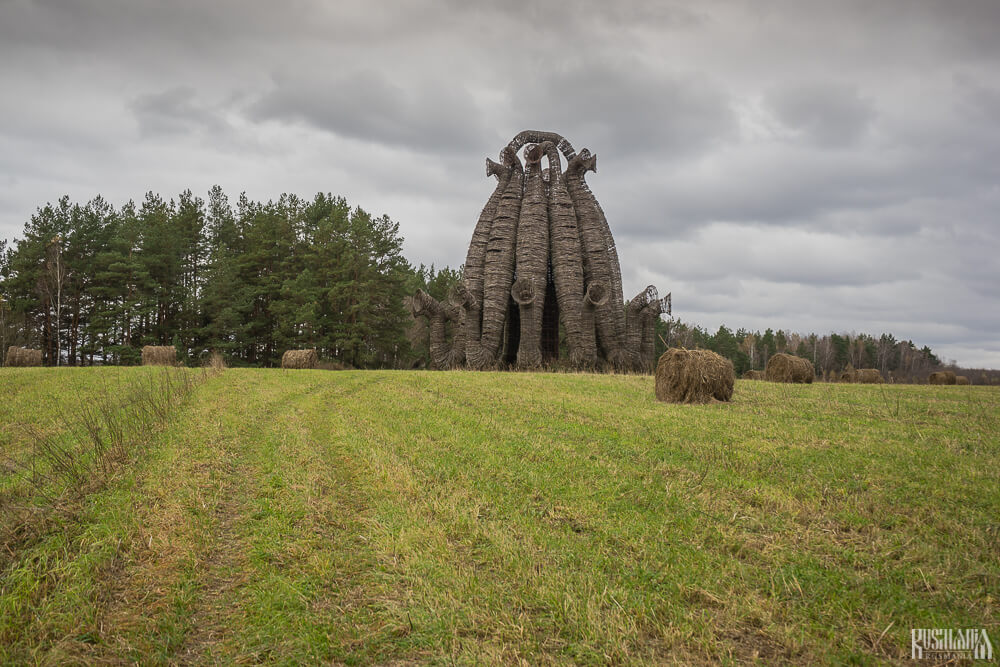The Awesome Capital of Chechnya
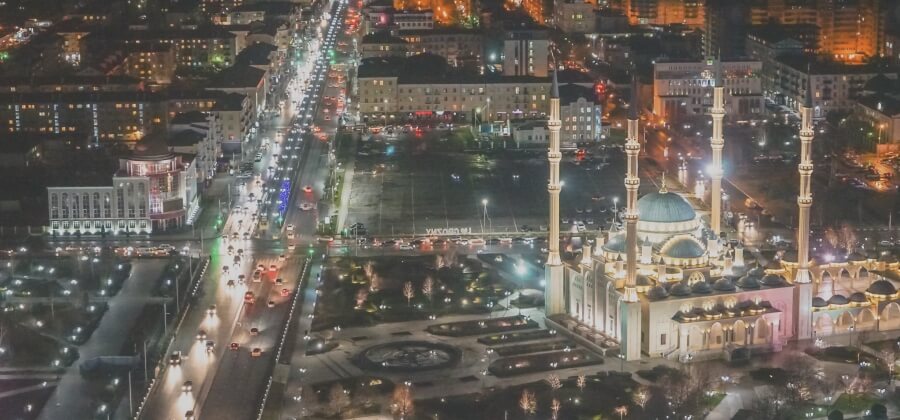
THE AWESOME CAPITAL OF CHECHNYA
Grozny - let’s face it, when most people think about this city they tend to think of the bloody Chechen-Russian wars, a half-destroyed city, terrorist attacks and kidnappings. Even though many people have read all about how millions of roubles, allocated from the federal budget, have been spent rebuilding the city, the lingering perception of danger still persists, especially among Westerners. The advice of most Western foreign services advising against all travel to Chechnya and other parts of the Caucasus only re-enforces this idea and puts off many potential visitors.
However Grozny has long been on our list of places we want to visit and in December 2016, after hearing more and more stories of how safe the city and Chechnya as a whole have become, we decided to go for it and booked flights and a hotel online for a weekend break in Grozny.

Within moments of arriving in the city centre, after the short taxi ride from the airport, any remnants of fear that may have remained about whether it was a good idea to come here faded away, when we saw for ourselves how we had arrived in a normal, civilised city like any other in Russia. OK, admittedly in no other city in Russia had we ever seen so many posters of the Russian president or of the region’s head, but the fact that Putin, Kadyrov Senior and Kadyrov Junior were always somewhere looking over you really was the only thing out of the ordinary. Otherwise people were, rather boringly, going about their business, sitting in cafes or just out strolling and chatting with friends like everywhere else! We even felt a bit stupid and naive for thinking it could be anything other than this.
From our hotel we took the short walk to Chechnya’s most famous landmark - the Akhmat Kadyrov Mosque which is better known as the Heart of Chechnya Mosque.
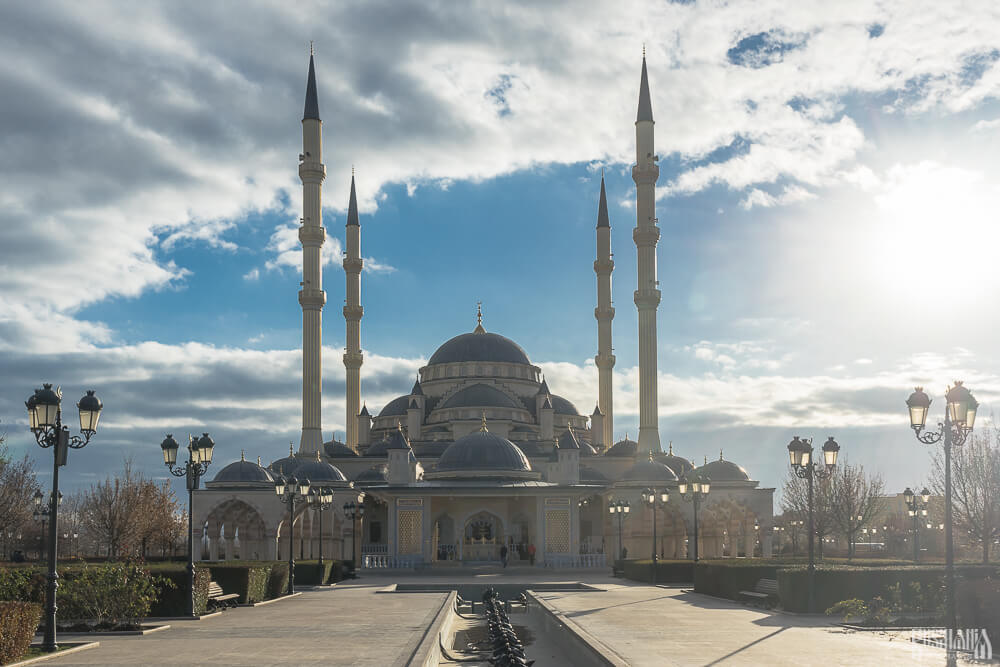
It was built between 2006 and 2008 and upon its completion it became a symbol of the rebirth of the city after a decade of bloody war.
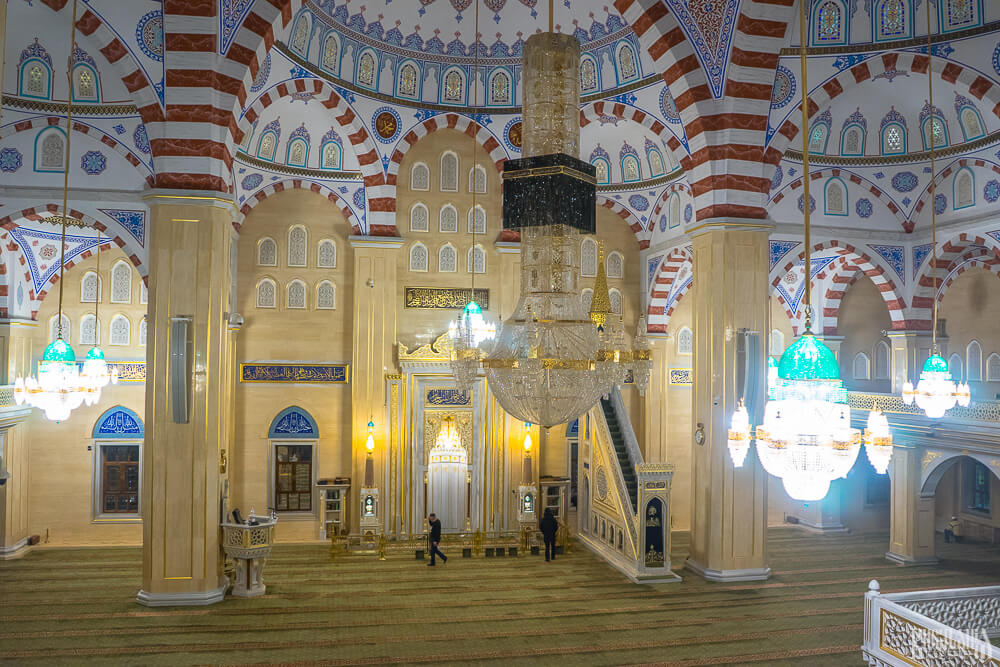
It is built in the Ottoman style, taking Istanbul’s Sultan Ahmed Mosque (the Blue Mosque) as its inspiration, and consists of a central dome surrounded by four 62-metre minarets.
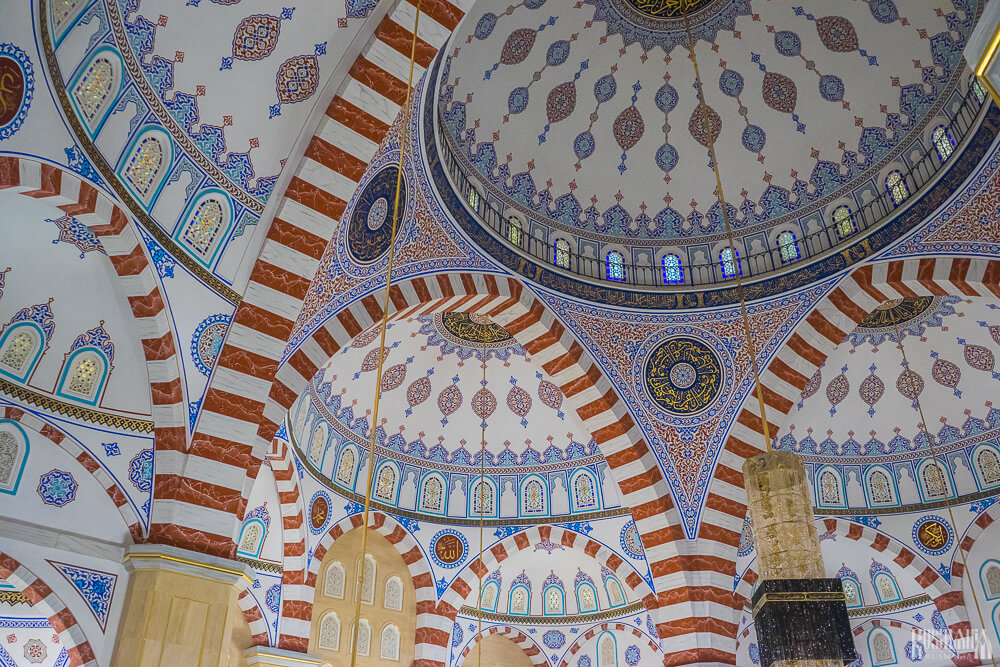
With a capacity of approximately 10,000 people, it is one of the largest mosques in Europe. As no service was taking place it was possible to enter and even take photos of the beautiful interior from the second floor.

Immediately behind the mosque, on the other side of River Sunzha, is Grozny-City - a complex of seven towers consisting of business centres, offices, a hotel and residential apartments. A massive 435-metre tower called the Akhmat Tower is also under construction and due to be completed in 2020. This modern complex and the neighbouring mosque have led to Grozny being referred to as the Russian Dubai and, despite the smaller scale, you can see the resemblance.
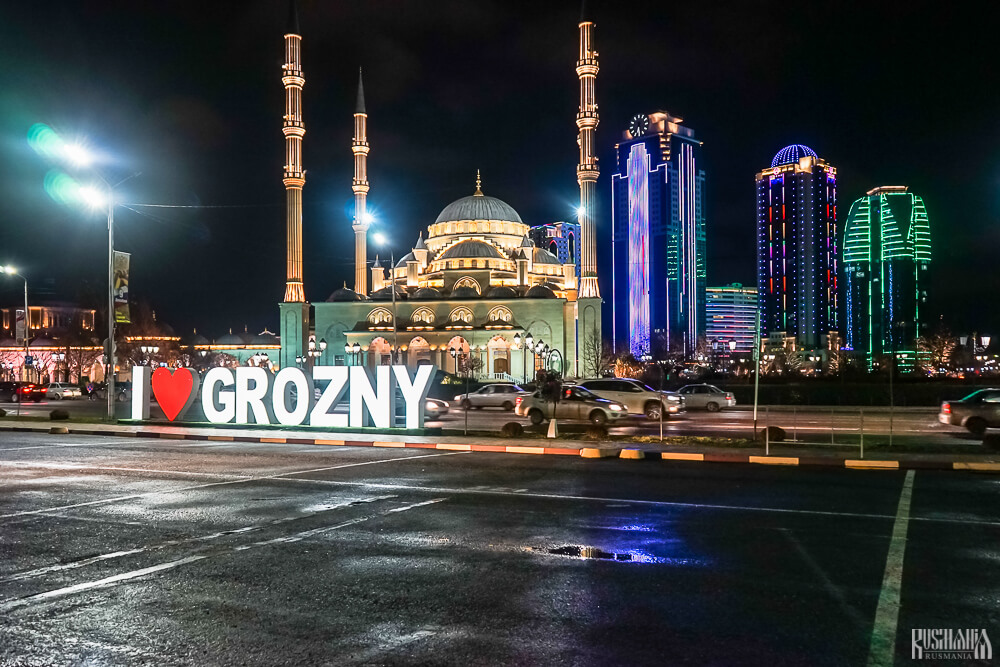
It is possible to go to the top of one of the towers to a viewing platform where you can see the whole city stretching out before you. However it is only permitted to take photos in certain directions. Photos of the residence of the head of Chechnya (in the east) are forbidden, and this policy is strictly enforced.
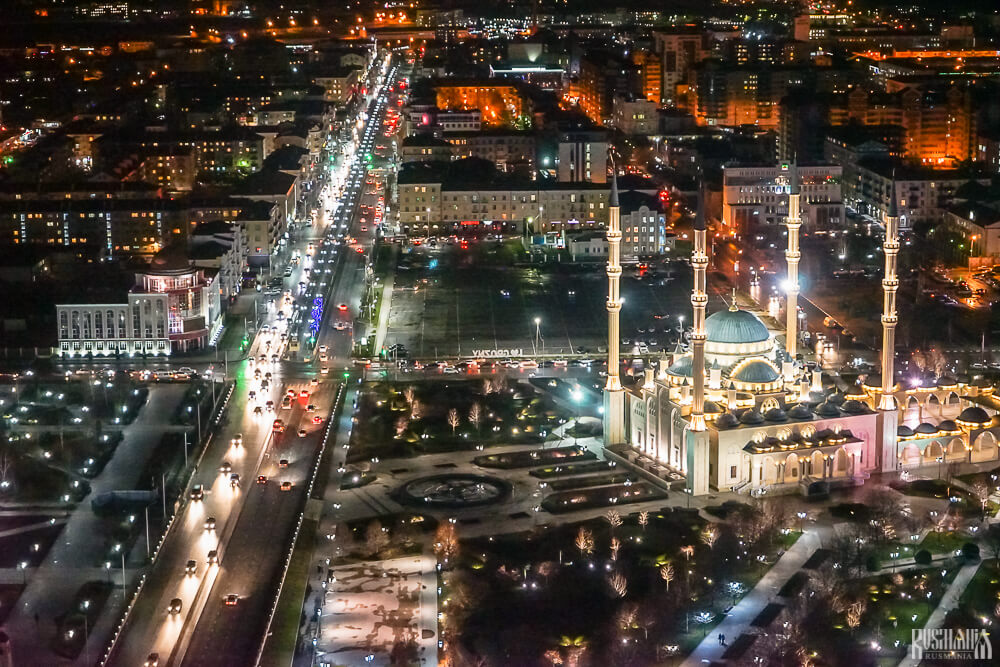
It was in this area on the River Sunzha that the Russians established a fortress in 1818, which represents the founding of the city. The fortress was built to control the native Chechens from passing through the nearby Khankalskoe Gorge.and it was intentially given the name of Groznaya which can be translated as “awesome”, “fearsome” or “awe-inspiring” - Ivan the Terrible in Russian is known as Ivan Grozny.

The mosque and business complex are located at the end of Grozny’s main street which since 2008 has born the name of Vladimir Putin and it is the only street in Russia to be named after the current president.
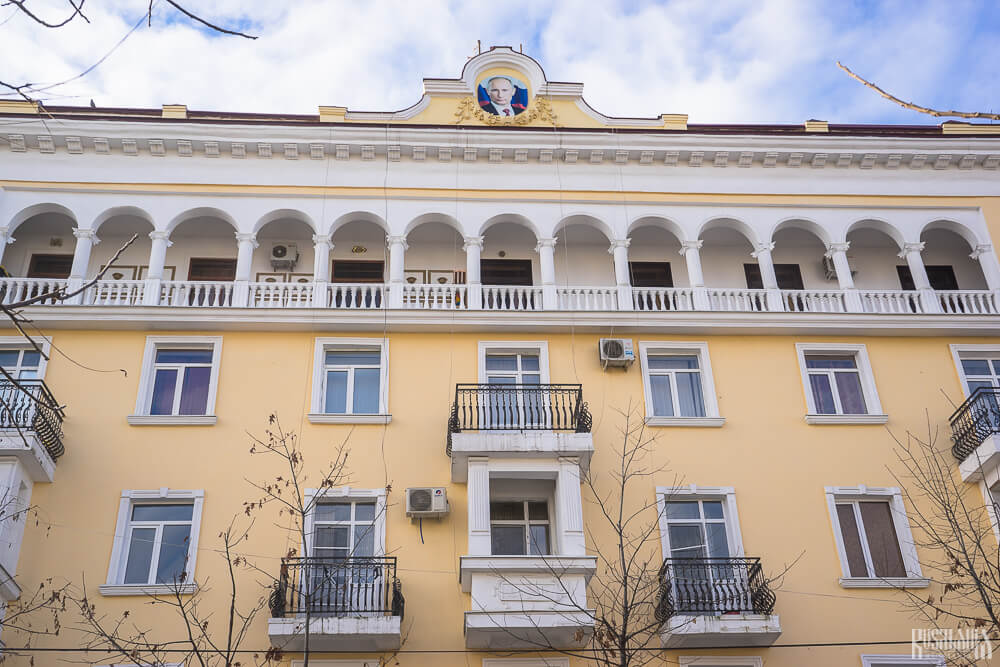
On weekends it is closed to traffic, which makes it even more pleasant for strolling around.
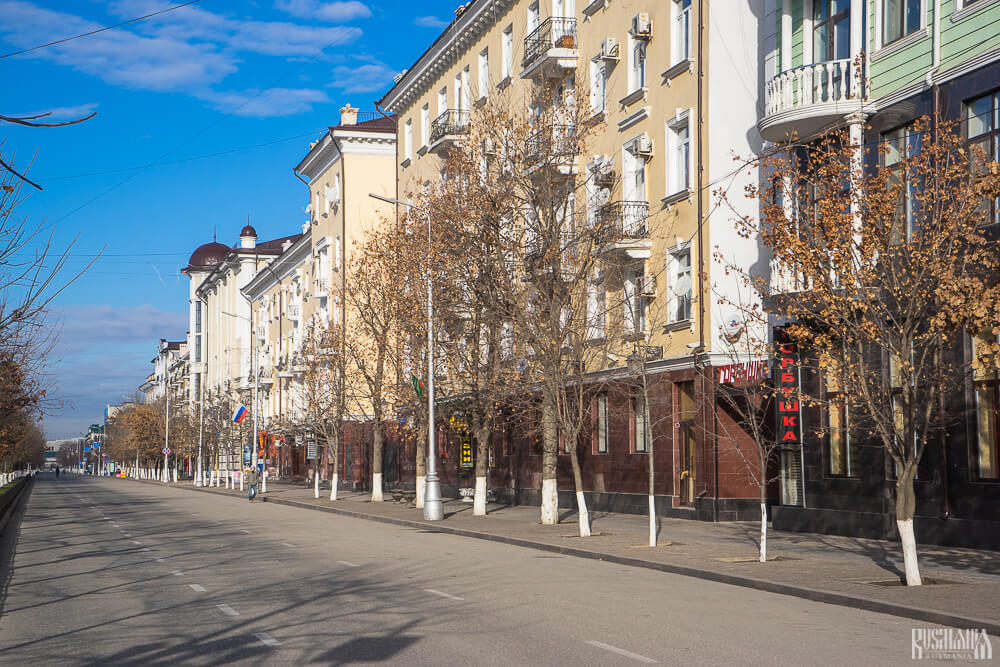
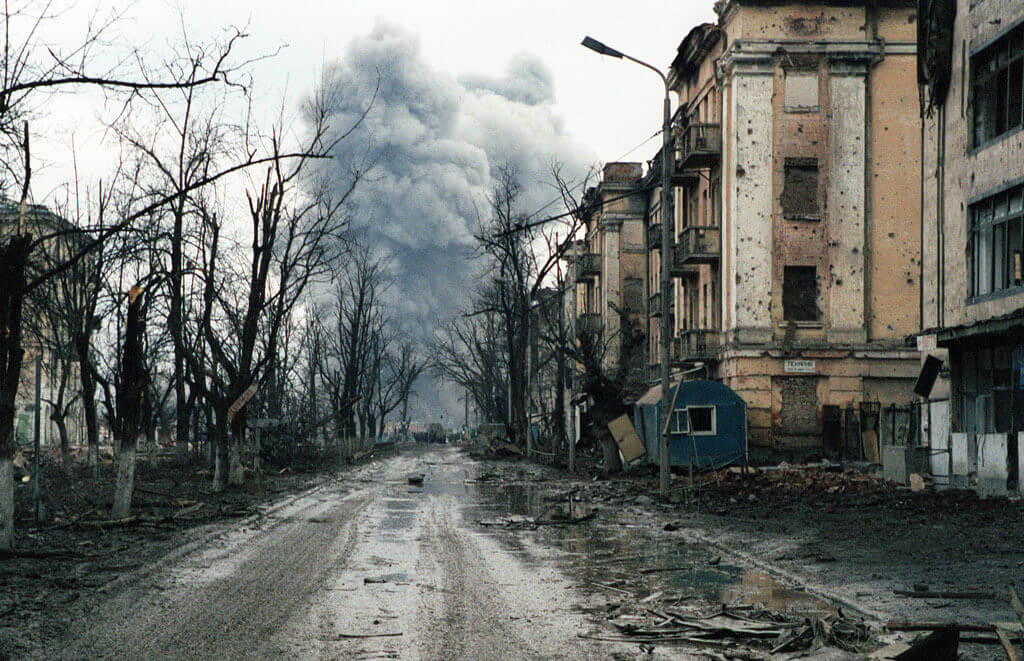
As well as numerous cafes and restaurants, the city’s two main museums are also found here: the National Museum of the Chechen Republic and the Akhmat-Khadzhi Kadyrov Museum. The first uses artwork, archeological finds, photographs and examples of traditional instruments, crafts and weapons to detail the history and culture of the Chechens, and is located in a purpose-built building featuring traditional Chechen towers.
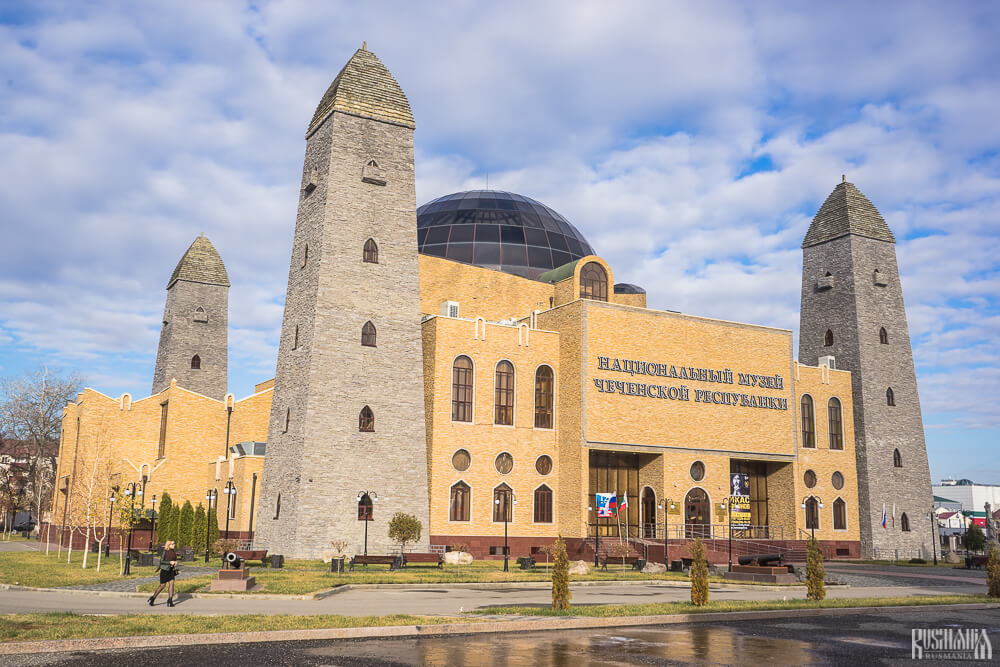
The second, located in the base of a war memorial, has various displays on the life and work of Chechnya’s first president and the history of the nation.
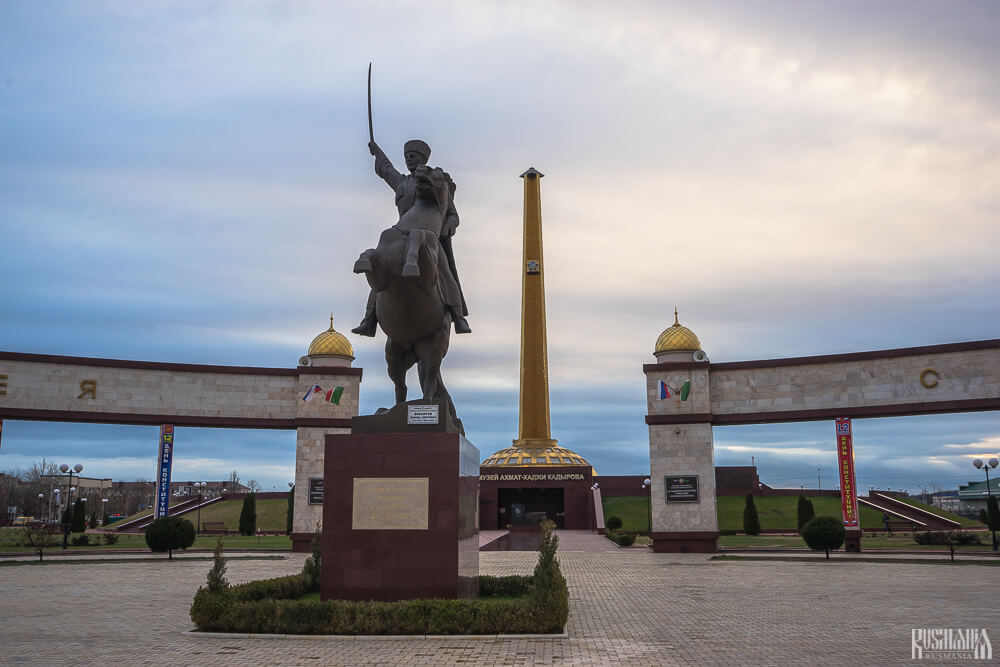
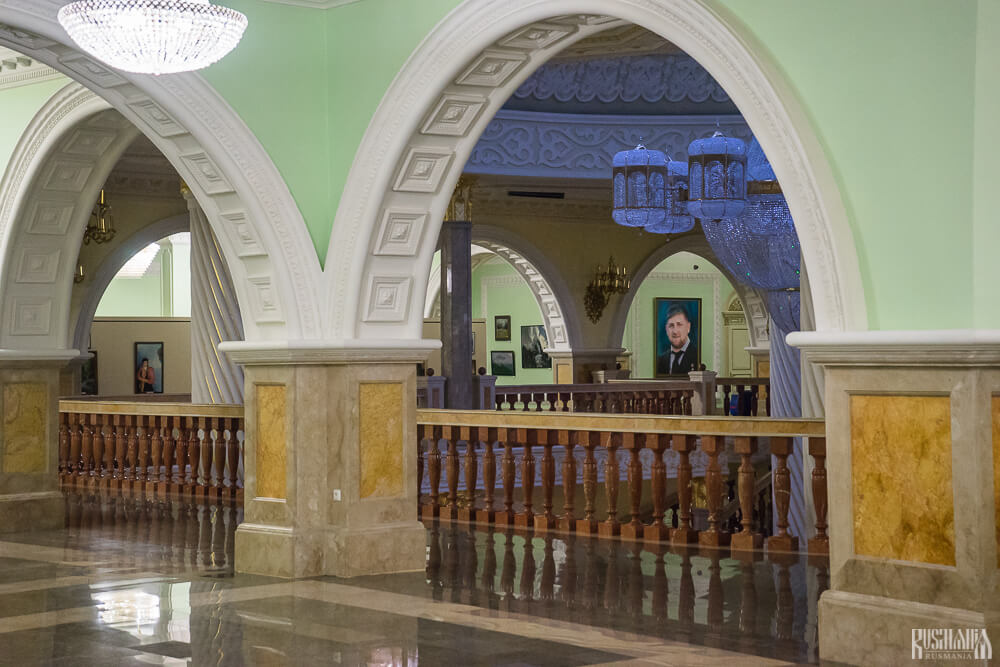

For dinner we decided we had to try the most famous dish in Chechen cuisine - zhizhig-galnash. The meal consists of a chunk of boiled meat (usually beef or chicken) with flour or corn dumplings.
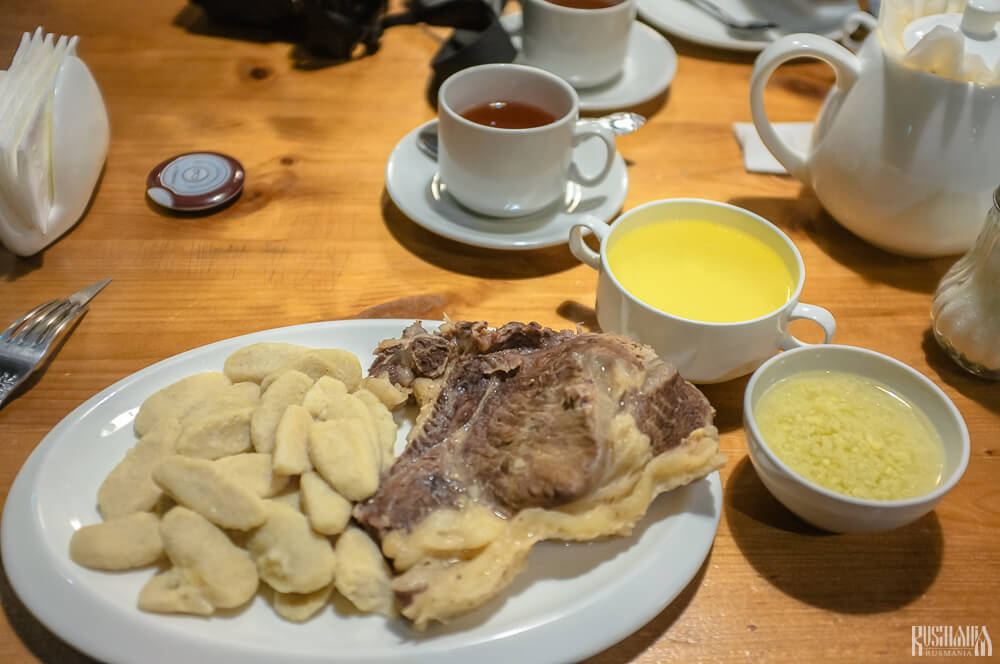
We ordered one standard beef one and one made with dried, salted beef. The dish is traditionally served with a broth made out of either potatoes or garlic. It is undoubtedly a dish you would categorise as hearty and filling rather than fine dining, and we left the restaurant completely sated! One thing we couldn’t help but notice at the restaurant is the lack of alcohol.
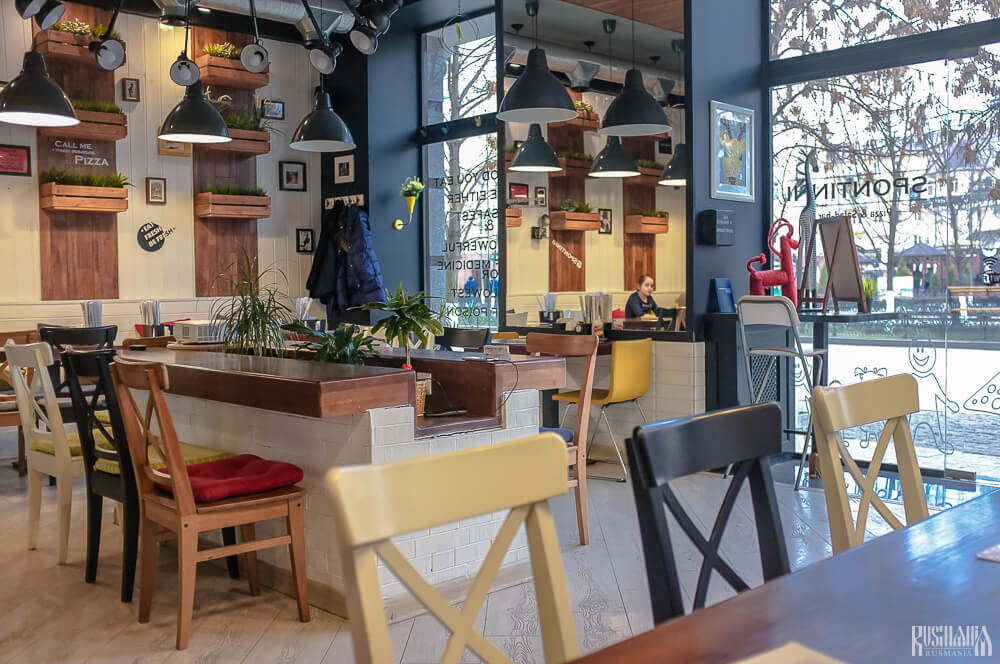
There are only very few places that sell alcohol in Chechnya and so it is standard to see groups of men sat around drinking nothing stronger than tea.

On our second day we had hired a local guide to take us into the mountains to Lake Kezenoyam which is located on the Chechen border with Dagestan and is considered one of the natural highlights of the republic. On the way we stopped off in Vedeno for breakfast. The village was often in the news during the Chechen Wars as it was a rebel stronghold from where separatist leaders Shamil Basaev and Doku Umarov operated. One hundred and fifty years before this it was the capital of Imam Shamil’s North Caucasian Imamate during the Caucasian War. Today though peace once again reigns, with a busy market and a rebuilt mosque.
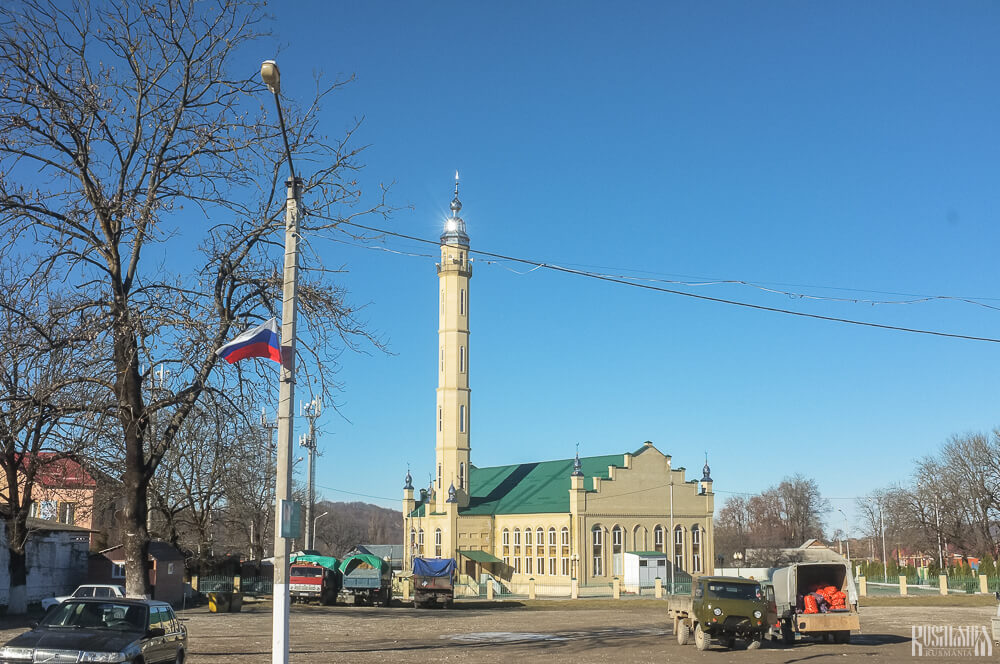
Breakfast, by the way, consisted of local pancakes: khingalsh - pancakes filled with sweetened pumpkin, and chepalgash - buttery pancakes with tvorog (cottage cheese). Both of which were delicious.
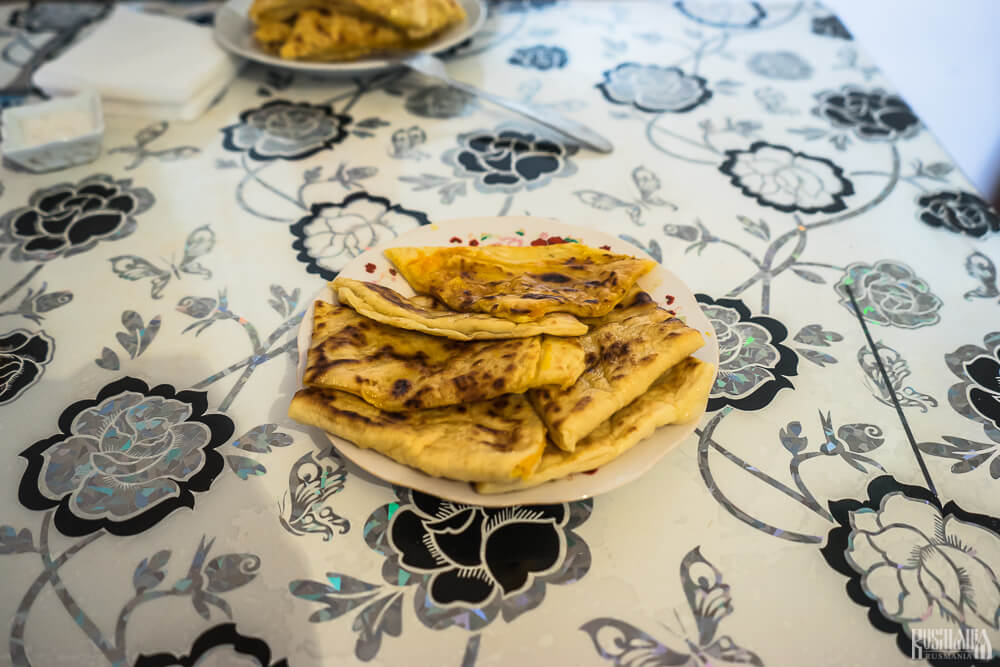
The stretch of the journey from Vedeno to the lake is when the real scenery begins as you slowly ascend up into the mountains.
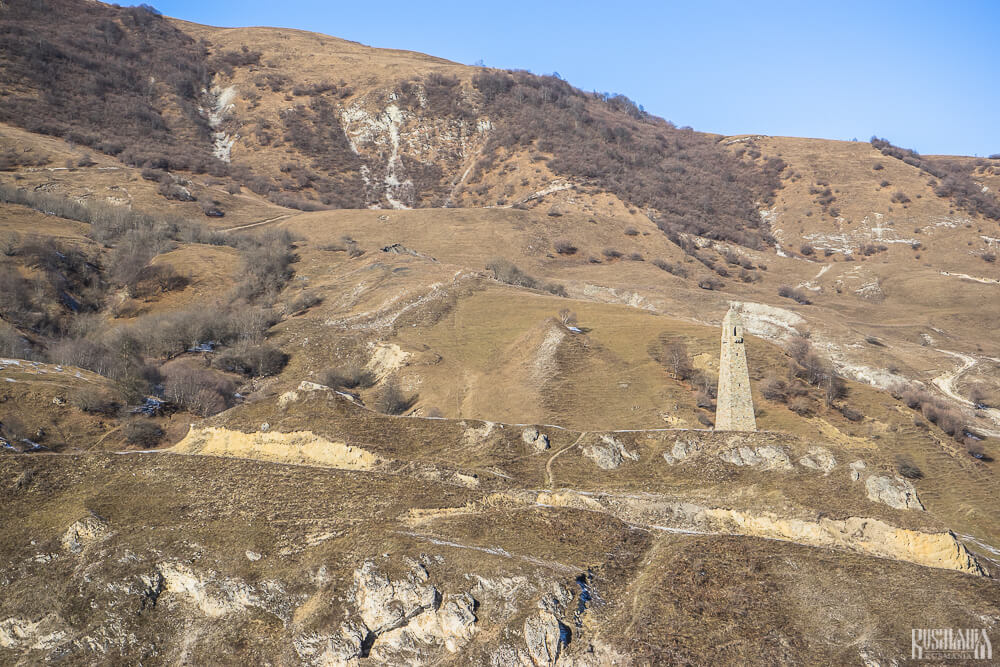
Our guide told how December was not really the time to be visiting and that we should definitely come back in spring when the flowers were in bloom in the meadows and the whole place smells like a Parisian perfumery. Each new turn in the road offered more and more breath taking views of the valley until finally the glittering turquoise blue of the lake becomes visible on the horizon.
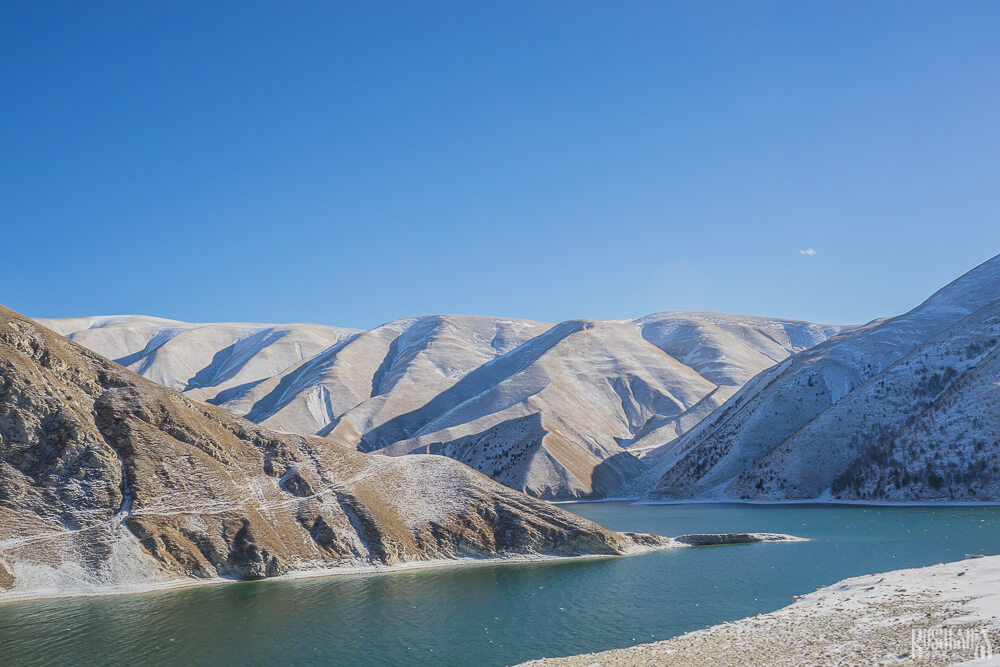
Kezenoyam in the Chechen means Blue Lake and it is clear how the lake got its name.

Kezenoyam is the largest lake in the North Caucasus and was likely formed by an ancient earthquake forming a natural dam of two rivers in the valley. Today a tourist complex has been established on its shores, complete with a hotel, cottages, a restaurant, saunas and even a zip line.
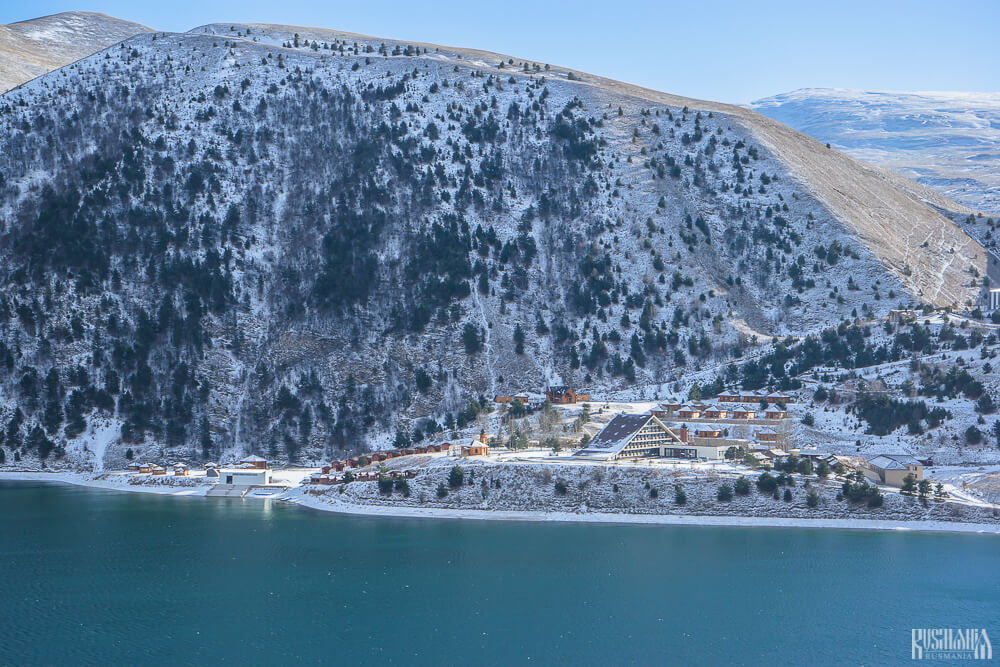
The investment can be seen as an investment in the stability and the future of the region. Today it is still rather hard to imagine Chechnya becoming a tourist hotspot, but hopefully this will change over the coming years.
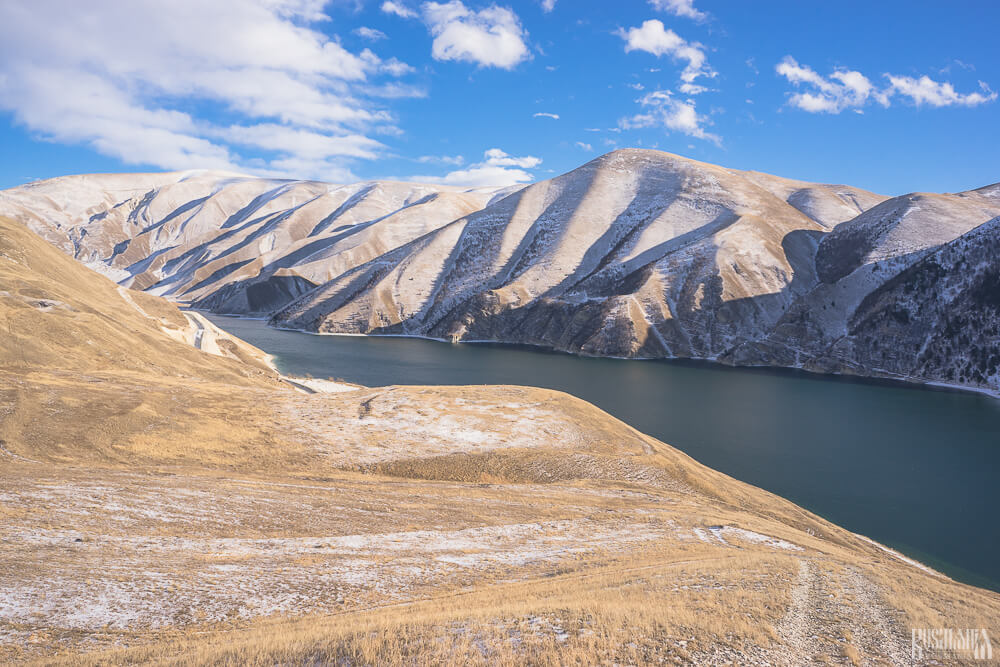
On the way back we stopped off in Argun, a city just outside Grozny, to see its new mosque. The mosque was completed in 2014 and named the Aimani Kadyrova Mosque - in honour of the wife of Akhmat Kadyrov, mother to the current head of Chechnya Ramzan Kadyrov - however it is frequently referred to as the Mother’s Heart Mosque.
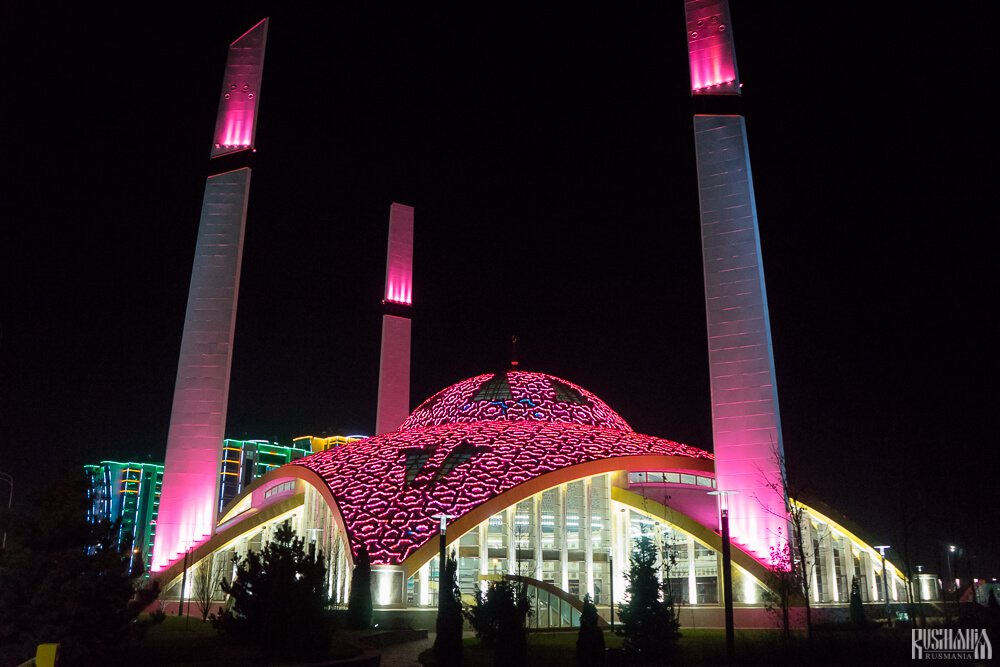
The facade of the mosque is predominantly glass and covered with lights which change colour, creating a very modern and open appearance. Like in Grozny, this mosque too is also backdropped by a modern business complex.

Of course, the current head of Chechnya, Ramzan Kadyrov, remains a controversial figure, especially in the West, but as this is a travel piece we just want to focus on tourism; there are plenty of other places where you can find political analyses regarding the current Russian-Chechen policy and the rule of the Kadyrovs.

We can just report on our personal experience as independent tourists to the region and the overall impression was wholly positive - beautiful buildings, friendly people who are happy to welcome tourists, tasty food and spectacular natural views. In terms of security, we at no point felt insecure or threatened, in fact quite the opposite!
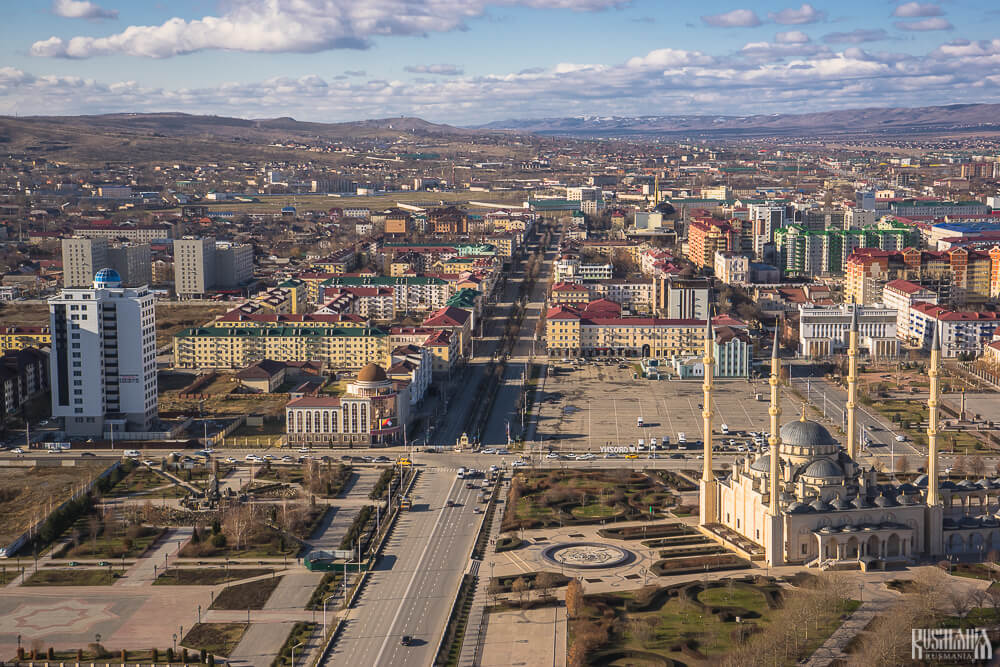
Hopefully the recent stability continues and a new generation will grow up not knowing war. The potential for tourism and the benefits this will bring is obvious. Judging by the busloads of Russian tourists we saw coming on day trips to Grozny from the nearby Mineral Waters resorts shows that this dream is coming closer and closer to fruition.

► Routes ► Places ► The Awesome Capital of Chechnya
• OTHER PLACES •
In the Kaluga Region, which neighbours the Moscow Region, there is a place which attracts artists, romantics, architects, nature lovers and adventurists alike. Just 200km from Moscow and you find yourself in a different world - endless forests and fields, hills and gorges, a picturesque river.
VERKHOTURIE: THE HOLY LAND OF THE URALS
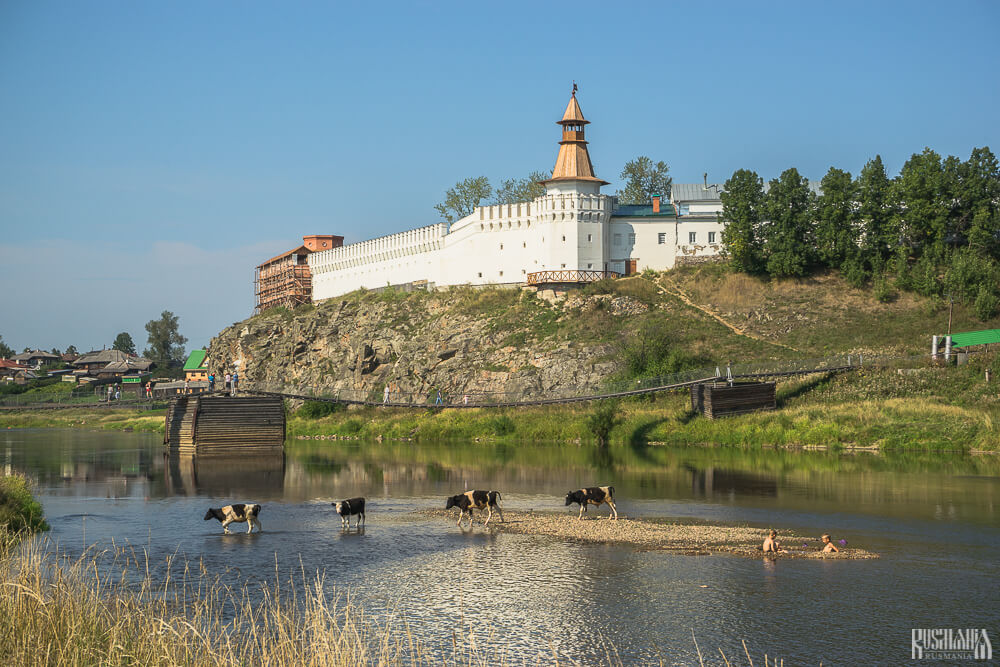 This place is rarely included on tourist routes for foreigners, but it is a popular place of pilgrimage for Orthodox believers along with the likes of Sergiev Posad, Diveevo, Valaam and Solovki. In addition to its famous religious sight, the city has the only kremlin in the Urals.
This place is rarely included on tourist routes for foreigners, but it is a popular place of pilgrimage for Orthodox believers along with the likes of Sergiev Posad, Diveevo, Valaam and Solovki. In addition to its famous religious sight, the city has the only kremlin in the Urals.
THE TRANQUIL WORLD OF KENOZERO NATIONAL PARK
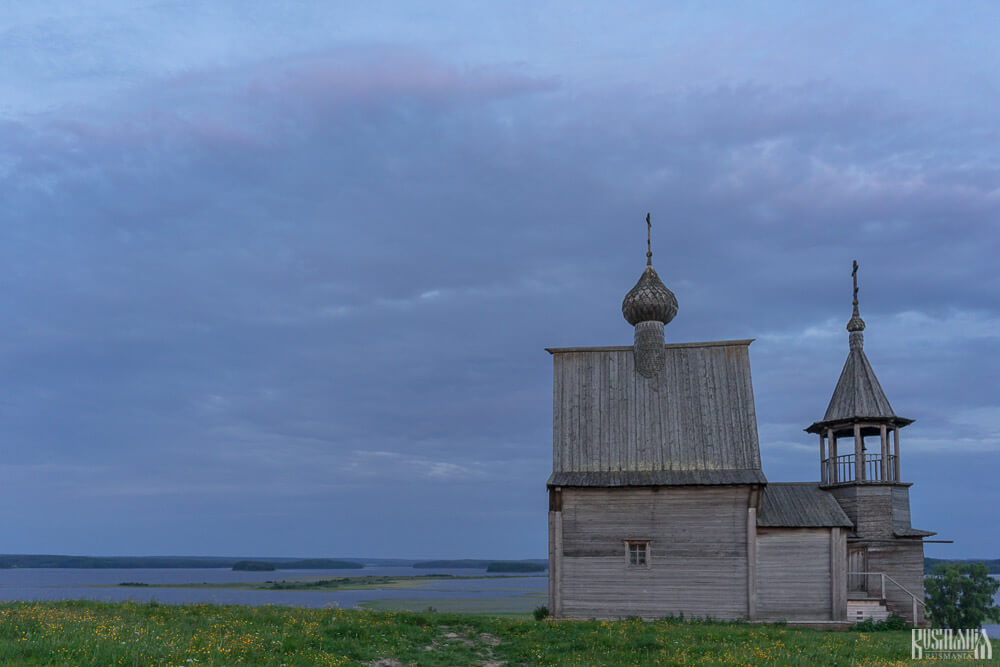 Russia has around 50 national parks which were set up to preserve the country’s most spectacular nature, as well as its cultural heritage and traditional ways of life. One such park is the Kenozero National Park – a magical place in the Russian North which people come back to again and again.
Russia has around 50 national parks which were set up to preserve the country’s most spectacular nature, as well as its cultural heritage and traditional ways of life. One such park is the Kenozero National Park – a magical place in the Russian North which people come back to again and again.
TRACING TOLSTOY'S FINAL JOURNEY
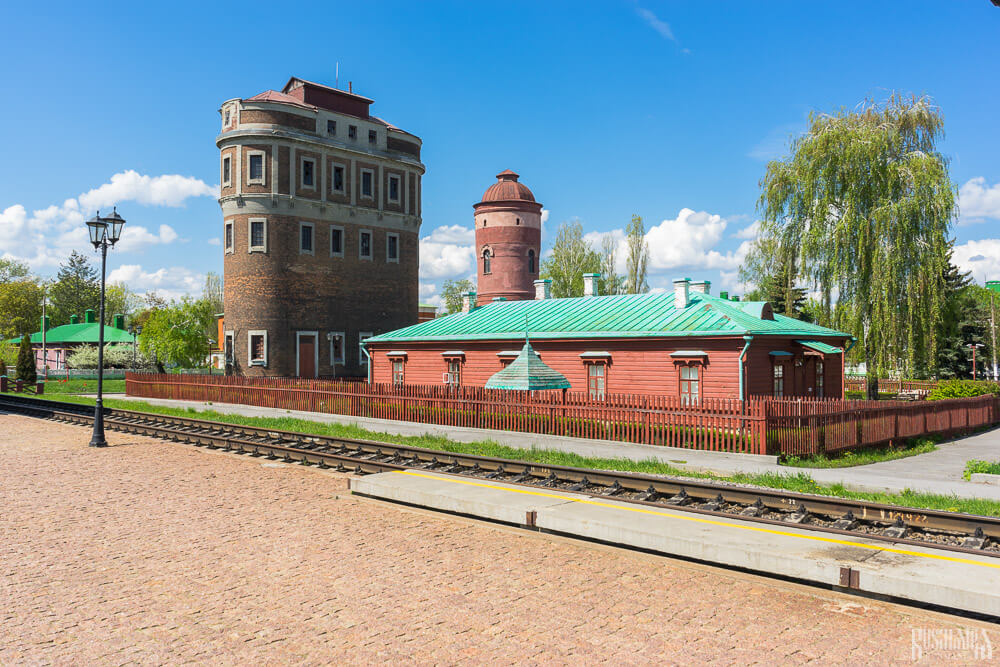 Lev Tolstoy is one of the greatest figures in world literature. On the night of 28 October 1910, Tolstoy secretly left his Yasnaya Polyana estate and set off on a journey with no defined destination. In a letter he left his wife, he wrote that his life was a burden and that he required solitude.
Lev Tolstoy is one of the greatest figures in world literature. On the night of 28 October 1910, Tolstoy secretly left his Yasnaya Polyana estate and set off on a journey with no defined destination. In a letter he left his wife, he wrote that his life was a burden and that he required solitude.
